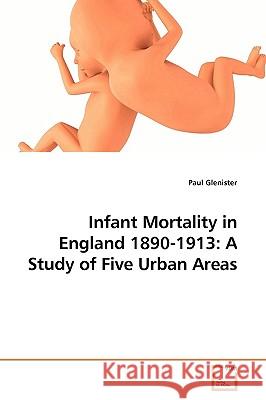Infant Mortality in England 1890-1913: A Study of Five Urban Areas » książka
Infant Mortality in England 1890-1913: A Study of Five Urban Areas
ISBN-13: 9783639213751 / Angielski / Miękka / 2009 / 316 str.
Although mortality was falling in late Victorian England, that of infants did not begin a significant decline until the early 20th century. Indeed, infant mortality was rising in the 1890s. In this ground breaking work, the late Paul Glenister examines five contrasting urban areas (Birmingham, Colchester, Finsbury, Leeds, and Southampton), to establish the factors responsible for this pattern. Drawing on a vast range of detailed local sources, especially the records of the local medical officers of health, he quantifies the impact of weather, sanitation, health care, and infant feeding practices, on infant mortality rates. His conclusions have important implications for the debate about the underlying causes of mortality decline in the period, and especially the relative contribution of state intervention.
Although mortality was falling in late Victorian England, that of infants did not begin a significant decline until the early 20th century. Indeed, infant mortality was rising in the 1890s. In this ground breaking work, the late Paul Glenister examines five contrasting urban areas (Birmingham, Colchester, Finsbury, Leeds, and Southampton), to establish the factors responsible for this pattern. Drawing on a vast range of detailed local sources, especially the records of the local medical officers of health, he quantifies the impact of weather, sanitation, health care, and infant feeding practices, on infant mortality rates. His conclusions have important implications for the debate about the underlying causes of mortality decline in the period, and especially the relative contribution of state intervention.











